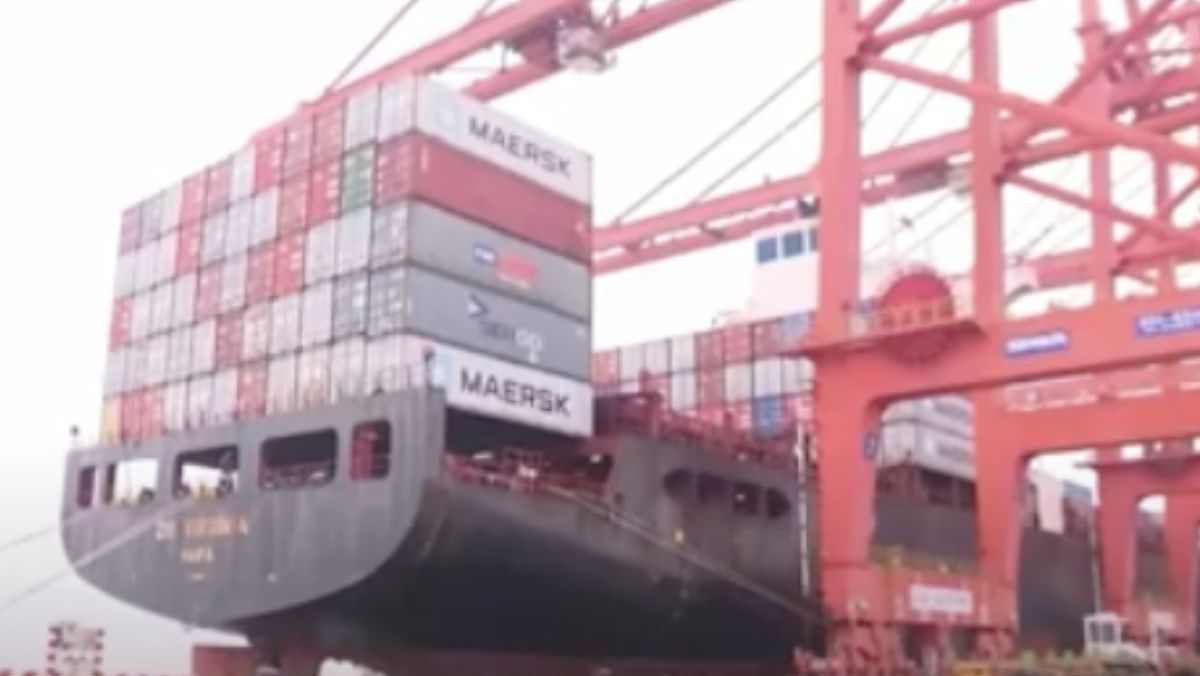China’s trade surplus soared to nearly $1 trillion in 2024, marking a historic milestone as the nation’s exports far exceeded imports. This staggering figure underscores China’s dominance in global manufacturing, reaching levels unseen since America reigned supreme immediately after the Second World War, reports the New York Times.
China’s General Administration of Customs reported that Beijing exported $3.58 trillion worth of goods and services last year while importing $2.59 trillion, resulting in a record-breaking $990 billion trade surplus. This surpasses the previous record of $838 billion set in 2022.
When adjusted for inflation, China’s 2024 trade surplus dwarfs those of historical export giants like Germany, Japan, and the United States. China’s manufacturing sector now commands a third of the global output, exceeding the combined production of the US, Japan, Germany, South Korea, and the UK.
Global backlash and rising trade tensions
China’s export surge has triggered widespread concern among its trade partners. Industrialised nations and emerging economies alike are imposing tariffs to shield their manufacturing industries from China’s low-cost goods. In retaliation, China has introduced its own tariffs, escalating fears of a global trade war.
The European Union and the United States have raised tariffs on Chinese automobiles, while middle-income nations like Brazil, Turkey, India, and Indonesia have also erected barriers to protect their developing industries. This global pushback reflects growing anxiety over factory closures and job losses caused by China’s export-driven growth.
China’s domestic economic problems
Despite the export boom, China’s domestic economy faces significant headwinds. A housing market crisis has led to widespread job losses and eroded middle-class savings, dampening consumer spending on imports and local goods. Overcapacity in manufacturing has driven down prices, causing financial strain and loan defaults among Chinese firms.
China’s pursuit of self-reliance, notably through its “Made in China 2025” initiative, has reduced its reliance on imported factory goods. This strategy has transformed China from a major car importer to the world’s largest car exporter, overtaking Japan, South Korea, Mexico, and Germany. Chinese firms now produce nearly all the world’s solar panels and have ventured into manufacturing commercial jetliners to challenge industry leaders like Airbus and Boeing.
China’s state-owned banks have significantly increased industrial lending, from $83 billion in 2019 to $670 billion in 2023. This financial support has fuelled China’s factory expansion, contributing to the ballooning trade surplus.
Historical benchmarks
China’s current surplus far exceeds historical benchmarks. Japan’s peak surplus in 1993, adjusted for inflation, totalled $185 billion—just a fraction of China’s 2024 figure. Germany’s 2017 surplus, equivalent to $326 billion today, also pales in comparison, notes the New York Times.
Historically, even the US post-Second World War trade boom did not match China’s current surplus. America’s 1947 surplus, valued at $130 billion today, was much smaller than China’s today. However, the US 1947 surplus represented about 4 per cent of the global economic output at the time. By comparison, China’s surplus equals roughly 2 per cent of global output but continues to grow.
China’s competitive edge stems from extensive investments in education, infrastructure, and industrial capacity. The number of engineering graduates China produces every year exceeds the total number of graduates in all majors produced by the US annually. High tariffs and import barriers further protect Chinese domestic industries.
Many foreign manufacturers still rely on China for cost-effective production. Eric Poses, CEO of Miami Beach-based game company All Things Equal, notes that US printing costs for board games are double those in China, while some electronic components are not made in America at all. “I wish I could do it here in a cost-effective manner, but it’s just not possible,” he told the New York Times.

